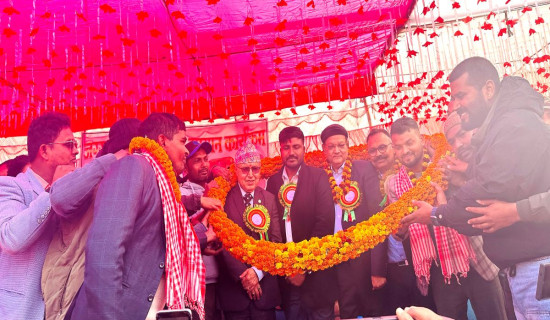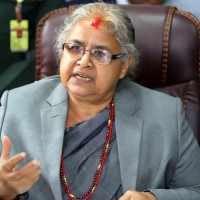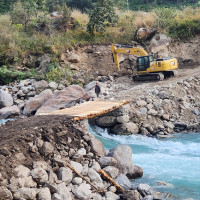- Thursday, 25 December 2025
175 gharial hatchlings grown in 42 years
By Our Correspondent,Bardiya, Apr. 23: To help conserve gharials, a critically endangered species globally, a Crocodile Breeding Centre has been operating within Bardiya National Park.
Over the past 42 years, the centre has successfully raised 175 gharial hatchlings. Currently, the breeding centre is home to 20 hatchlings over the age of three and 132 under three years old. Previously, 23 gharial hatchlings were released into their natural habitat -- 13 in the Babai River of Bardiya and 10 in the Rapti River of Banke.
The practice is to raise gharials at the breeding centre until they are three years old before releasing them into their natural habitats.
Sarojmani Paudel, Acting Chief of Bardiya National Park, said that the goal is to increase the gharial population by releasing hatchlings that have matured enough to survive in the wild.
Although the breeding centre was established in 1982, the actual breeding process began only in 2015, and the first release of gharials into the wild took place in 2017. It took years of effort before the centre achieved success. Currently, there are six breeding gharials at the centre -- two males and four females.
The gharial is a protected species that lives in clean water and feeds on fresh fish. Bardiya National Park reported that efforts are on to manage habitats and prevent poaching.
Nepal’s major rivers, including the Karnali, Babai, Narayani and Rapti are natural habitats for gharials. While gharials are found in the Karnali and Babai Rivers in Bardiya, there is no exact data on their population.
According to conservation officer Santa Bahadur Magar, regular monitoring does take place, but due to budget constraints, a comprehensive population census has not been possible.
Conservationists said that gharials are declining due to river pollution, habitat destruction, reduced availability of prey species and the use of poison in rivers.
Gharials, now vanishing globally, are primarily found in South Asia, specifically Nepal and India. Nepal is home to two crocodile species -- mugger and gharial, with the latter listed as a protected species.
Some of the gharial hatchlings currently at the breeding centre are now ready to be released into the wild.
















